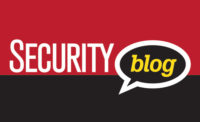Access Control on Remote Control

In the past few years, some business owners or managers have remotely monitored from the comfort of home and while traveling by using a video system installed by a security integrator or off-the-shelf equipment designed for do-it-yourself installation and management. Many bar and restaurant owners have been doing this for some time. I’ve also seen this in banking and even fast-food franchises on an enterprise level system. This practice is cost effective and also serves as an obvious deterrent to theft and employee misconduct.
There’s potential with this technology with access control. Systems that reside on a server or even a workstation can typically be configured for remote access via secure methods. The technology is genuinely scalable and can be applied to a small business as well as a global enterprise corporation or organization. In fact, more than one major integrated electronic security system can use the same platform to expand from a small one facility system into one that can manage access control, video, fire and intrusion alarms at locations worldwide.
It can even be done with a facility that is somewhere in the middle, such as a hospital, college or corporate campus. Your security integrator can manage your entire operation offsite.
How do you decide if this right for you? Are there designated personnel on your staff who have the ability to remotely access your security systems via the Internet and a secure method such as Virtual Private Networking? If not,are you experiencing a need to keep staff on-site 24/7 to manage systems? Be clear that I’m speaking of managing and administering the systems, not responding to alarms and the end-user experience.
Do you have an integrated security platform that allows administrative assistants, for example, to manage access for certain departments? What method are those users relying on for secure connections to your central system: actual client software installed on each of their workstations via a web browser interface or via a direct network connection in some other form?
Managing local client installations at workstations is labor intensive. Someone has to install the software. That person is going to find there are differing levels of operating systems, malware problems… you probably see where I’m going with this. Let me provide a solution. I’ll use a Microsoft solution as an example; however, this is not a Microsoft-specific solution. Other platforms offer similar functionality.
Consider implementing or leveraging an existing terminal server for the majority of system users to access your integrated security systems. Client software has its place at monitoring stations and on system administrators’ workstations. Often, such a terminal server doesn’t require the addition of an actual physical server device. A virtual server will often work nicely if your software is compliant with that environment.
A terminal server or similar solution opens so many doors for collaboration and resulting in personnel efficiencies. It reduces the labor-intensive process of installing multiple software client installations. It also is the perfect vehicle for remote access via the Internet from virtually anywhere. This will reduce a need for 24/7 staffing. It will also open the door to a very popular, cost-effective, employee friendly and very flexible option of telecommuting into the enterprise security sector.
I’ve noticed an increasing challenge in attracting IT-savvy personnel who are also integrated security system savvy. Typically, this also requires finding personnel who are certified in their IT specialties but who are also vendor certified to manage integrated security systems. I know integrators who are seeing a significant turnover in staffing such folks to perform on-site programming for new installations and/or to support upgrades. They are easily lured away by higher salaries and benefits. There is a shortage in this specialty, and there is a growing demand for these talents.
An incentive that may assist you in retaining qualified personnel is to offer them a telecommuting agreement. Using my own system as an example, there is no aspect of system administration or programming and configuration changes to “my” integrated security systems, both access control and video, that I cannot access from anywhere with a laptop and a broadband Internet appliance.
I hope I’ve touched on enough examples to have you looking at cost savings – reductions in turnover, the challenges of “everything security” requiring 24/7/365 on-site personnel and some other efficiencies. Share this column with your IT colleagues if the methodologies I’ve described are foreign to you. Another excellent choice, as always, is your trusty security integrator.
About the Columnist:
Joel Jensen is the associate director of security at Minnesota State University, Mankato, and in addition, serves as the system administrator and project manager for the University’s access control system, radio communications systems and two networked video systems.
Looking for a reprint of this article?
From high-res PDFs to custom plaques, order your copy today!





